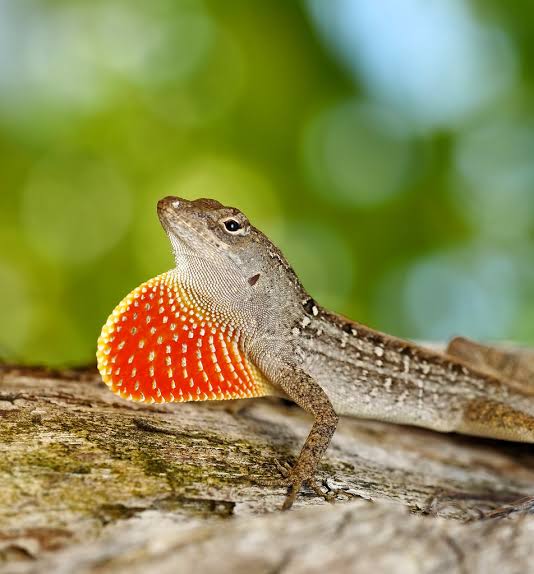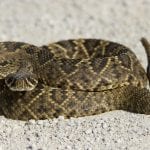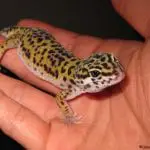The Lizard’s Tale 102: Does Evolution Repeat itself?
Credits: Smithsonian Channel
Wild lizards are an interesting subject after they have undergone evolution. They are unique to see that rapid evolution affects their function and structure as species. That is when their natural history and behavioral ecology have also been influenced.
Differences in the shape and size of the head and an increase in the development of newer structures and bite strength have also been normally observed. The physical changes have also occurred from one side to another by the dramatic changes in the social structure and population density.
Even genetic testing has confirmed the modern population of lizards as the descendants of the original lizards. That leaves you all the more excited in knowing the wild lizards that have undergone evolution.
1) Aspidoscelis Neavesi
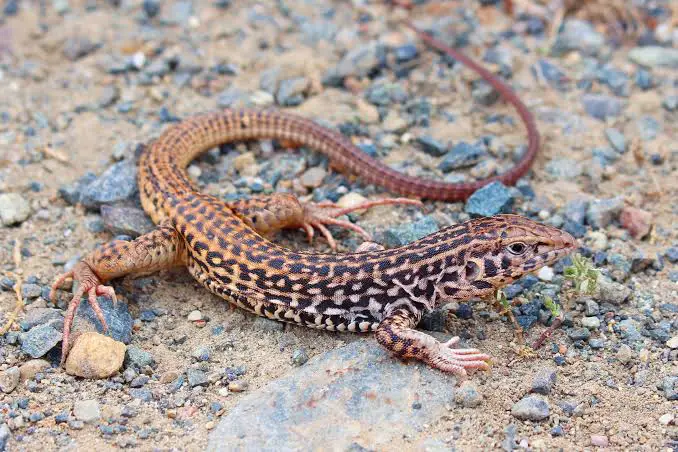
This new lizard looks quite the same as the anoles seen hanging out on the porches of Florida. This was created in a laboratory through the breeding of 2 related lizard species.
Its name is created by the scientist William B. Neaves. This took place after the creation of a new species. It was him who led the study and discovered the 4-chromosome lizards back in the year of 1967. It is just that biology may need a new term to best describe A. neavesi. This is due to the reason that the entirety of the species consists of clones. This is almost the same as the hybrid clones that have accurately been described.
2) Anole Lizards
There were almost a hundred-eighty anole lizard species that evolved in different varieties of colors and unique shapes. They live side by side on the tree branches, trunks, and grasses in the Caribbean. It’s just that there is more than meets the eye when it comes to their evolutionary history.
So far, they are considered to be physiologically differentiated based on their temperature. That enables them to boost diversity and inhabit distinct niches in their communities.
As per the shapes of their bodies, they differ according to the perches that they use. They, even more, occupy various microclimates on whether it is sunny or shaded. They also have adapted to various temperatures. It is their physiological differences that enable species to divide the space at such a fine scale. That allows them to have more species that occupy various microclimates’ meters apart.
3) Anolis Carolinensis
On the small island of Florida, the discovery involved the lizard named Anolis carolinensis. It moved to such higher perches that follow the invasion of Anolis sagrei. It also adaptively evolved bigger toepads after twenty-generations.
A native to the Nearctic and neotropical regions, this wild lizard occurs mostly in the southeastern part of the United States. This kind of specie has become more abundant in Hawaii after its discovery in 1950. It also flourished in Cuba, Japan, Guam, and the Bahamas. Its densities have been affected by the presence of predators and brown tree snakes.
It is by far one of the known lizards in the suburban and urban areas. It also can be found next to dwellings specifically on the sides of the buildings and the fence posts.
4) Anolis Sagrei

Known for its other name, Bahaman anole, Anolis Sagrei is a lizard that is native to the Bahamas and Cuba. This has been introduced to any parts while it is sold as a pet lizard. It now crosses Florida and the northern part of the United States like Texas, Southern Georgia, Alabama, Mississippi, Southern California, and Hawaii.
This wild lizard kind of specie is believed to be highly-invasive. It reaches high-population density while it expands its range so quickly. It also consumes and outcompetes different species of native lizards.
This evolved to be a darker brown, and black in color with dewlap ranges from yellow until orange-red.
5) Chamaeleolis Anoles
Seen thriving as e group of anole on the island of Cuba, the Chamaeleolis Anoles is a kind of specie that can be slow-moving and large the same as the chameleons. They also are more likely to live in covered branches of tall lichen.
They have no specified counterpart or whatsoever on the islands. The evolution can seem predictable as DNA sequences confirm that this wild lizard is related to the large lizards in Hispaniola.
6) Monitor Lizard
Belonging to the genus family of Varanus, the monitor lizard is a native to the Asian, Oceanian, and African parts. Now the monitor lizard can be found in America being an invasive specie.
The family of Varanidae originated in Asia. It then expanded its geographic range into Africa, Australia, and Indonesia. It is believed to have turned into amphibious. It is often full in a marine form and in a mosasaur.
It is the snake that comes in resemblance to monitor lizard than any other extant reptile. It is just that the snake has been considered a sister group of the anguimorphs and iguanians. The monitor lizard is the same as the snake having forked tongues. It makes use of its tongue to sense the odors.
7) Italian wall lizard
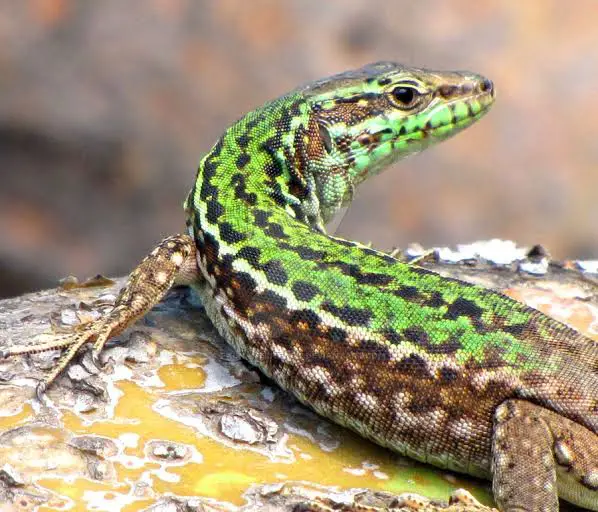
Known as a reptile around the world, the Italian wall lizard is a native to the Sicily, Italian Peninsula, and the North Adriatic coast. Its range is also introduced extending from the Iberian Peninsula, the Mediterranean Islands, Turkey, UK, Greece, USA, and North Africa.
Indeed, this wild lizard is eclectic when it comes to habitat use. It also can be found in agricultural environments, natural areas, and urban areas. It also uses man-made structures and trees as its refugees enhancing accidental transportation.
Their ecological traits go well with their behavioral characteristics. This leads to the successful spread and introduction of P.sicula to newer environments. This, thereby, negatively impact native lizards due to displacement, hybridization, and competition.
8) Lava Lizard
The lava lizard is known to have evolved from a single ancestor millions of years ago. It is physically and less likely to be considered as spectacular as compared to the iguanas. It is just that it is the most abundant of all reptiles on the islands. It also can be seen scurrying about.
Although it has kept on evolving, it still makes food for snakes, hawks, mockingbirds, herons, and centipedes. Its defense is the ability to drop its tails. Its tail also keeps attracting predators and moving around. It can camouflage or flee itself while it remains still and hides behind a rock. This has the ability to protect itself. But human conservationists include managing feral and domestic cats, rats, and dogs that guard their habitat against the destruction of humans.
9) Florida Anole Lizard
This is one interesting wild lizard that took just fifteen years for it to evolve completely. This is based on the experiment that has been conducted by the New York Times.
The experiment involves the small population of the wild lizard. That it became more prone to rapid changes because of the small gene pool. That we humans could bring influence in its evolution on a bigger scale.
The rapid adaptation of the lizard is already a hopeful sign. Its life search for a way to survive and adapt despite the best efforts of humanity to reduce them.
10) Jesus Lizard
The Jesus Lizard is believed to have fallen in line with the biblical creation. This is a kind of lizard that has all the essential parts for it to move through the watery surface. There was no change or whatsoever in the basic form of Jesus Lizard. The natural selection and mutations have not left traces of change. Its body features also have gone through an evolution. Their physiology and anatomy have been investigated, enabling this 2-feet long reptile to scamper on the water.
11) Eastern Blue-tongue Lizard
This silvery-grey lizard has blackish bands and dark brown colors across the tail and the back. It also is dark and chocolate brown to black having cream, large pink and yellow blotches on the back. While its tail is banded in similar colors. It could grow to almost six-hundred millimeters and to about three-hundred sixty-millimeters in body and head.
But the popularity of the Eastern Blue-tongue Lizard goes undeniable, especially in the wild and non-indigenous areas. Their owners would tire them that led in the competition for the native wildlife.
They also are very common in the native region. They just get killed due to a superficial resemblance due to a poisonous snake. Their head is also not readily discernable from the death adder. The wild lizard serves as a predator for the invertebrates that help maintain the insect populations.
12) Fin Lizard

The fin lizard is another interesting wild lizard that has undergone evolution. This is a small-sized and bipedal iguanian lizard that has no front limbs. But it developed its rudimentary devices to keep itself cool.
It sets itself different from the rest of wild lizards due to its system of erectile dewlaps and fins on its tail and neck. These are raised into the wind after its body has turned too hot. That said, heat is transmitted through the fins and the bloodstream in the air. While it cools itself, it then typically balances one leg while it keeps the other off the surface of the desert. That way it will benefit from the system.
Now, you have learned more about these interesting wild lizards that have undergone evolution. Their genes evolved in the ancestor of snakes and lizards that will give us an insight that they are saved by the evolution.

